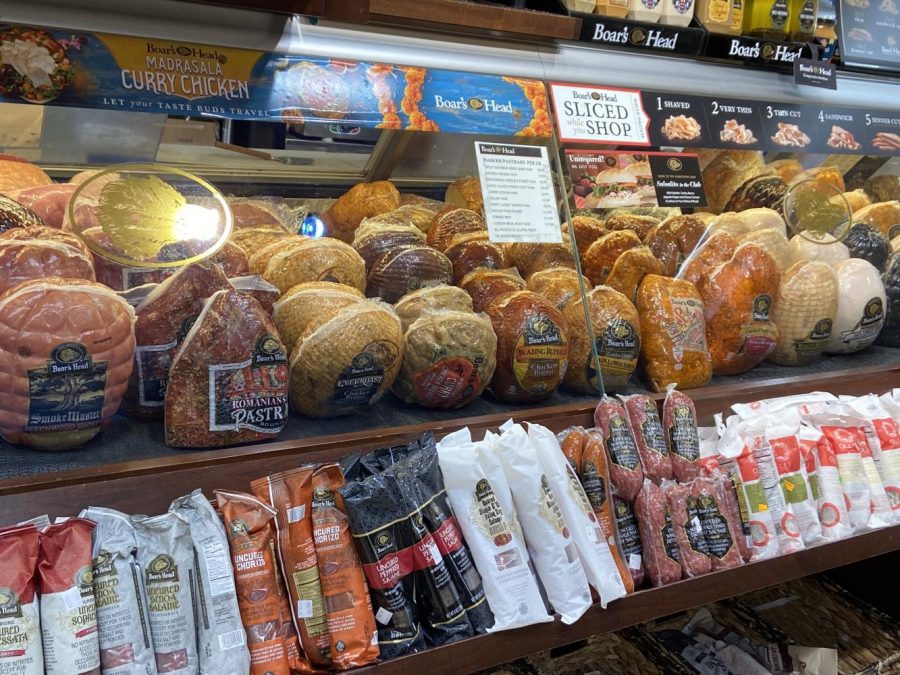As we all try to stay healthy by staying home, grocery store trips remain one of the most essential reasons to leave your house, dorm or apartment. In an effort to reduce unnecessary grocery trips but also stay nourished, big-batch cooking is an easy way to preserve large amounts of food in your freezer.
Buy the right bulk ingredients
When taking infrequent trips to the grocery store, it’s best to buy nonperishables in large quantities. Some great options are canned tomatoes, canned beans, dried beans, dried grains, pasta, oats, frozen meat and frozen vegetables. Even better, bulk goods are also very affordable. Buy enough to last you for weeks or even months, but make sure there’s enough to go around for others.
Cook soups, stews and stock in big batches
There’s tons of options when it comes to cooking big-batch recipes at home. One of the most straightforward techniques is one of the most traditional: stewing.
Although you can make your preferred style of stew, some of my personal favorites are vegetarian stews with either lentils or beans. These stews are perfect for cooking in quarantine because they mostly rely on common staples like coconut milk, chicken stock, canned tomatoes and spices.
Another great option is a classic Italian ragu. To make this, simmer hunks of any type of meat — oxtail, beef shank, pork sausage or anything you happen to have — in tomato puree. After three to six hours, your meat will be falling off the bone and tender.
Make sure to first sear your meat — either in the oven, or in the pot you plan on simmering the ragu in. If you have fresh produce, you can also add some sweetness to your ragu by sauteing onion, carrot and celery in olive oil before you add your passata and meat to stew.
If you don’t feel like making ragu, just make this classic marinara sauce.
Simple soups are another excellent choice for big-batch cooking. The basic formula is an allium (onion, shallot, scallions, etc.) base, any seasonings or aromatics (garlic, rosemary and oregano), your main soup vegetable like peas or squash and as much water or stock as needed. From there, just bring everything to a slow boil and cook for 10-15 minutes.
Then, all you need is a blender and you can make any kind of soup in under 30 minutes. Some great choices are frozen peas, butternut squash, frozen broccoli or canned tomato.
The last cooking technique for bulk cooking is making meat or vegetable stock. This is by far one of the easiest ways to keep your kitchen well-stocked and smoothly operating in quarantine.
Broth will add flavor to your soups, strengthen your stews and will reduce in pan sauces when making steak, chicken or fish.
To make vegetable broth, simply add all of the vegetable scraps you have into a pot of cold water. I like adding onions, carrots, celery, garlic, bay leaf, black peppercorns and any other pantry leftovers.
To make meat-based broth, I first simmer the bones and/or meat in water until they have started to release their natural gelatin (two hours, give or take a bit). Then, I add the vegetables because they take less time to break down and release their flavor into the water.
This may go for another hour or two once the vegetables are added. The timing really depends on how big your pot is and how big of a batch you are cooking.
When cooking broth, only bring the pot to a boil when you are initially heating your pot. Then, switch to the lowest simmer you can get for the remainder of the cooking process.
Lastly, make sure to skim any foam and scum that rise to the top of your pot.
Freeze food correctly
I use zip-lock gallon size bags to freeze stock, stew, vegetable scraps and soups. To do this, just add your meal of choice into the bag, zip it tightly without air bubbles and then place it in your freezer so it’s completely flattened.
This way, you can neatly stack stews, soups and liquids in an organized and efficient manner. I also highly recommend labeling and adding the date to your bags.
Not only is this method beneficial because it allows foods to freeze more quickly, but it also allows for more surface area when defrosting in the fridge.
Whenever freezing, make sure to first refrigerate your food, which should be at room temperature before it goes in your refrigerator. When defrosting, make sure to go from freezer to fridge, and fridge to your oven/microwave/pan. This method of safely freezing and defrosting your meals reduces the risk of foodborne illness.
Having an organized and functioning freezer with these bulk recipes means that you are always within an arm’s reach of a nutritious meal. Now is the time to start fortifying your kitchen with easy and simple projects that occupy your day and keep you feeling good.
Stay healthy and happy cooking!
Email Alex Christiano at [email protected].
























































































































































